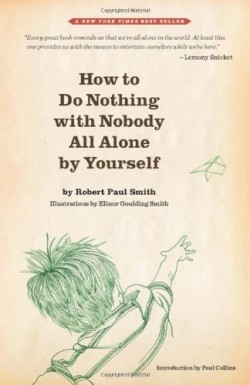How to Do Nothing with Nobody All Alone by Yourself
“If things were as they should be, another kid would be telling you how to do these things, or you’d be telling another kid. But since I’m the only kid left around who knows how to do these things…I guess it’s up to me.” So begins Robert Paul Smith’s book of advice on how to make one’s own fun, supplied with nothing more than pencils, blades of grass, thistles, handkerchiefs, rubber bands, and broken umbrellas.
Maybe adults always feel this way today—that kids are missing out on the simple pleasures of the past. Apparently, people felt this way back in 1958, when How to Do Nothing was first published and became a bestseller. This book is a happy antidote, full of real things that real kids can make and fool around with, just because.
There are only a couple of rules to keep in mind. First, “there’s no hollering for help.” The satisfaction is doing it on one’s own. Go to the library if you need to find something out. Next, a sharp pocketknife is safer than a dull one. As for owning a pocketknife to begin with, that’s something to work out with parents.
Parents who worry overmuch about danger should read the book first. Most of these inventions employ nothing more deadly than a spool or a horse chestnut. For the exceptions—the pocketknife and the sewing needle dart—Smith’s approach is a frank appeal to a kid’s reasonable nature. If you aim at the furniture or another kid, he says, good luck convincing your parents that this toy isn’t dangerous. With his own kids, he showed them how to use the item safely, watched them use it, and took it away if he wasn’t convinced they were ready to be careful.
The book’s rewards are great, however. Make a bracelet out of a clam shell by rubbing it on the sidewalk. Play mumbly peg. Decorate pencils, make a pin piano, or a basket out of burrs. Smith vouches for these inventions; he’s made them all, except the willow whistle—he was always a “dope” about those. Mostly, just enjoy fooling around and seeing how things work. Spending time away from the constant chatter of video and grownups can be “a good thing to do; you get to know yourself, and I think that’s the most important thing in the whole world.”
Disclosure: This article is not an endorsement, but a review. The publisher of this book provided free copies of the book to have their book reviewed by a professional reviewer. No fee was paid by the publisher for this review. Foreword Reviews only recommends books that we love. Foreword Magazine, Inc. is disclosing this in accordance with the Federal Trade Commission’s 16 CFR, Part 255.

